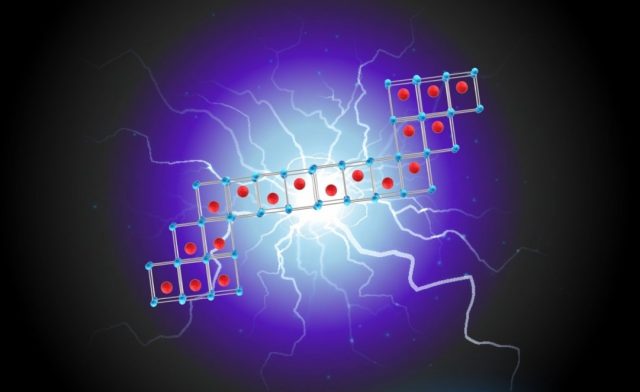US Army researchers have demonstrated a new method of energy storage that could help soldiers achieve technological superiority over their adversaries by allowing them to maintain and control large amounts of energy.
Researchers from the US Army Combat Capabilities Development Command, known as DEVCOM, Army Research Laboratory demonstrated a new method of antiferroelectric thin film production that takes advantage of the widespread availability of hafnium.
The resulting lead hafnate, or PbHfO3, thin film created with this Army technique could potentially open new doors for researchers who want to capitalize on the unique properties of antiferroelectric materials in order to create even more powerful energy technologies.
“When you need a burst of electrical power like in a defibrillator or a railgun, antiferroelectrics are a good way to get raw watts of pulse power out,” said Dr. Brendan Hanrahan, Army materials engineer. “Antiferroelectrics also naturally absorb oscillating signals, which make them excellent electronic filters.”
According to Hanrahan, this breakthrough signifies the first time that researchers produced antiferroelectric thin films with lead hafnate, a relatively unknown compound that wasn’t even confirmed to have antiferroelectric properties until 2019.
Researchers had theorized about lead hafnate’s antiferroelectric properties as early as 1953, two years after they identified lead zirconate, or PbZrO3, as an antiferroelectric material.
Due to the high cost of hafnium and years of inconclusive results, however, lead hafnate fell into obscurity while lead zirconate surged in popularity as the quintessential antiferroelectric material.
“Lead hafnate is almost absent from the literature, because getting pure enough hafnium at the time was incredibly difficult,” Hanrahan said. “Lead zirconate and lead hafnate were almost in equal esteem at the very outset, but lead zirconate was the only one anyone ever used because zirconium was a lot easier to come by than hafnium.”
Hafnium remained largely inaccessible until the early 2000s when it became an important component in semiconductor devices.
Once Army researchers realized that hafnium-related materials no longer struggled with the same supply chain issues that they once faced in the past, the researchers began to seriously consider hafnium as a potential ingredient for new materials.
From these deliberations emerged the possibility of an antiferroelectric thin film made from lead hafnate.
Around the same time, Army materials scientist Dr. Nicholas Strnad had recently discovered how to fabricate piezoelectric lead-based compounds with a technique called atomic layer deposition.
Given the favorable conditions, Hanrahan and Strnad seized the opportunity to determine whether they could use atomic layer deposition, a process commonly employed by semiconductor industry giants such as Intel and Samsung, to create antiferroelectric thin films for silicon wafers.
“ARL has been a leader in atomic layer deposition of ferroelectrics for the past five years,” Hanrahan said. “If you combine this capability with the current ubiquity of hafnium, it’s very easy to imagine why we should try tackling this antiferroelectric lead hafnate from the old literature.”
With the development of a lead hafnate thin film, Army researchers believe that lead hafnate has another chance to show its full potential as an antiferroelectric material and even outperform lead zirconate.
Hanrahan and his colleagues plan to further tailor the unique properties of lead hafnate in order to transition this technology to small businesses.



























